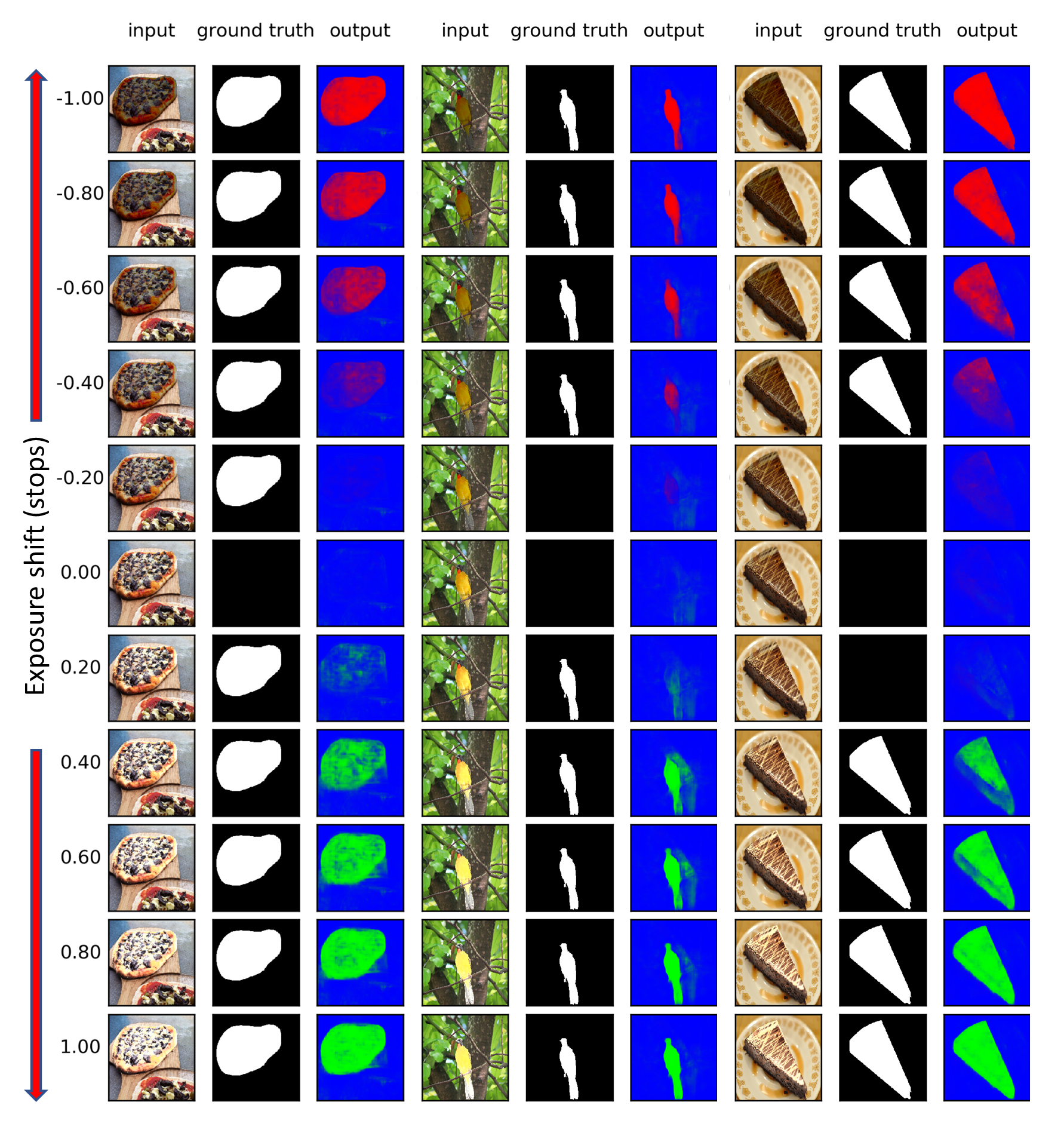Learning to Observe: Approximating Human Perceptual Thresholds for Detection of Suprathreshold Image Transformations
Many tasks in computer vision are often calibrated and evaluated relative to human perception. In this paper, we propose to directly approximate the perceptual function performed by human observers completing a visual detection task. Specifically, we present a novel methodology for learning to detect image transformations visible to human observers through approximating perceptual thresholds. To do this, we carry out a subjective two-alternative forced-choice study to estimate perceptual thresholds of human observers detecting local exposure shifts in images. We then leverage transformation equivariant representation learning to overcome issues of limited perceptual data. This representation is then used to train a dense convolutional classifier capable of detecting local suprathreshold exposure shifts - a distortion common to image composites. In this context, our model can approximate perceptual thresholds with an average error of 0.1148 exposure stops between empirical and predicted thresholds. It can also be trained to detect a range of different local transformations.
PDF Abstract CVPR 2020 PDF CVPR 2020 Abstract
